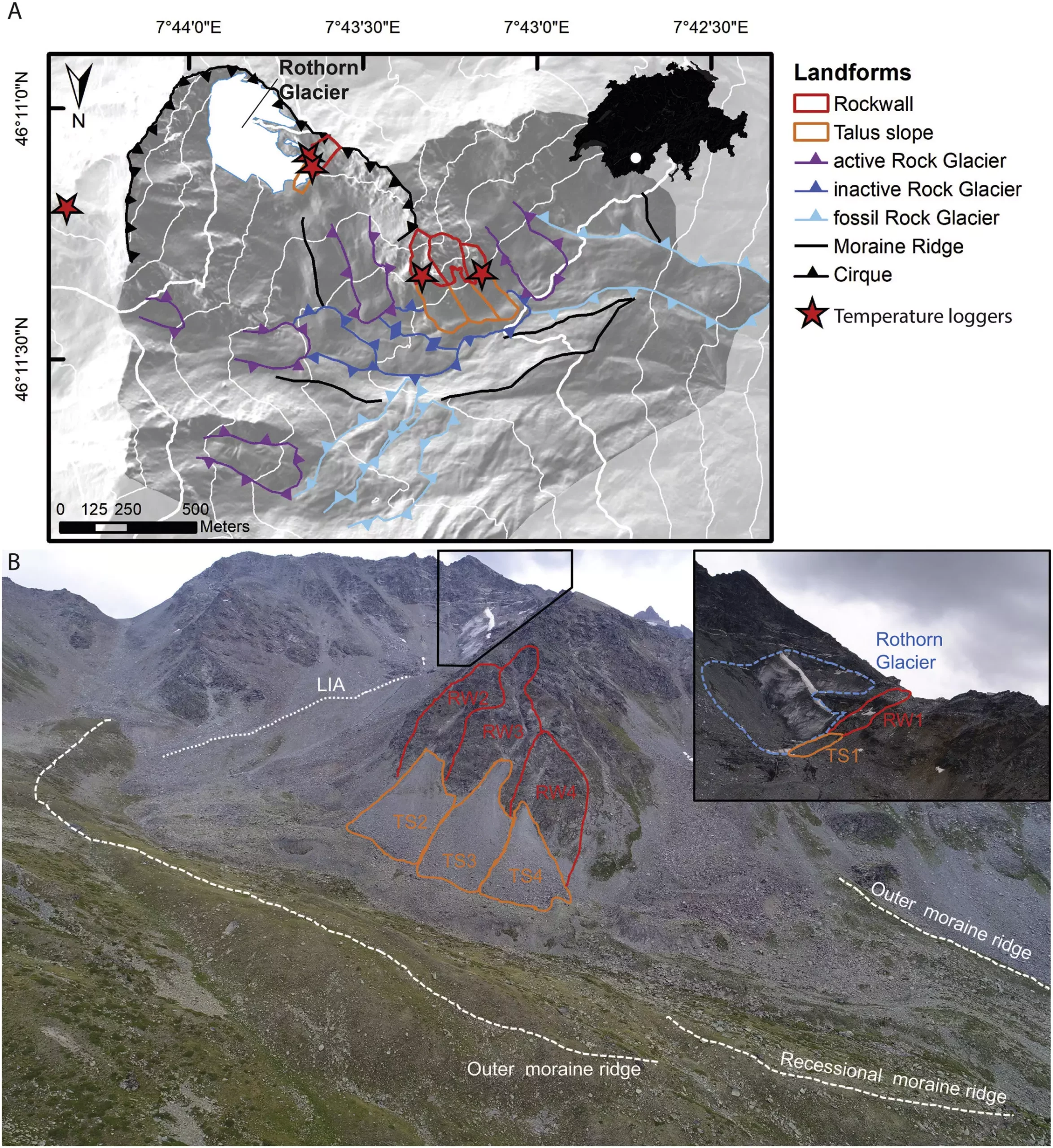In the midst of climate change, the process of deglaciation during the Holocene has been a topic of great importance. As glaciers retreat, they leave behind distinct landforms known as moraines, which have a significant impact on mountainous environments. Recent research published in Earth and Planetary Science Letters sheds light on the declining erosion rates in these environments during the Holocene. Dr. Daniel Draebing and his colleagues from Utrecht University have focused their study on the European Alps to analyze the role of climate warming in this phenomenon. By examining the slopes of mountain bedrocks, they aim to understand the factors contributing to the reduction in erosion rates.
The theory proposed by Dr. Draebing connects the reduced glacial load since the Younger Dryas period (~12,900–11,700 years ago) to the decline in erosion rates. The reduction in glacial debuttressing, caused by the retreat of glaciers, leads to a decrease in the exposure of steep valley sides to erosion. To test this theory, the research team combined real-world field data with modeling techniques. The study focused on a periglacial alpine valley in southern Switzerland, calculating erosion rates of 1.2–1.4 mm/year approximately 9,000–10,000 years ago. In comparison, modern measurements between 2016 and 2019 recorded erosion rates of 0.02–0.08 mm/year. Thus, indicating a significant decline in erosion rates.
The research team reconstructed the glacial retreat history of the Hungerli Valley and examined the impact of temperature on rockwalls. They specifically investigated the occurrence of permafrost and frost cracking, both of which weaken rockwalls and contribute to rockfall events. Permafrost refers to rock or soil material that remains below 0°C throughout the year, while frost cracking is the splitting of bedrock caused by freezing water. Modeling frost cracking involved analyzing the porosity change in the metamorphosed paragneiss and schist slate bedrock. The research team also utilized laser scanning surveys to record changes in rockfall activity in the Hungerli Valley.
Dr. Draebing and his colleagues found that higher erosion rates occurred in the middle to late Holocene on slopes that had been free of glacial ice for approximately 10,000 years. This can be attributed to elevated intensity of permafrost and frost cracking. The increase in elevation also contributed to greater erosion rates, with mountain rockwalls above 2700 meters experiencing more erosion compared to lower-elevation locations during the Younger Dryas. However, this pattern changed over time, and erosion rates rapidly declined. For instance, the highest recorded erosion rate of 50.7 mm/year occurred two orders of magnitude higher than earlier in the Holocene. But by 2019, the erosion rate decreased to just 0.58 mm/year. The research team suggests that this decay in erosion rate is due to a combination of increased frost cracking, thawing of permafrost, and landscape adjustment in response to the melting of glacial ice.
Erosion rates are influenced by various factors, including topographic stresses and climate-induced stresses. While climate warming reduces climate-induced stresses, topographic stresses remain persistent. Consequently, erosion rates are expected to reach an equilibrium similar to the current rates of 0.02–0.08 mm/year. However, it is unclear whether erosion rates will continue declining until future glaciation occurs.
This research on declining erosion rates in mountainous environments is crucial in comprehending the impact of deglaciation in a warmer world. As climate change continues, it is essential to understand processes that affect rock erosion and subsequent rockfall events. In addition to permafrost and frost cracking, extreme weather events and earthquakes also contribute to erosion. These factors have significant implications for local landscapes, communities, alpine tourism resorts, and wildlife struggling to adapt to the changing environment.
The research conducted by Dr. Draebing and his team sheds light on the declining erosion rates in mountainous environments during the Holocene. By studying the impacts of climate warming and glacial retreat, they have discovered the role of permafrost and frost cracking in contributing to erosion. As climate change continues, these erosion rates are expected to reach an equilibrium similar to current rates. Understanding these processes is essential for effectively managing the impact of deglaciation and climate change on mountainous regions and their inhabitants.


Leave a Reply